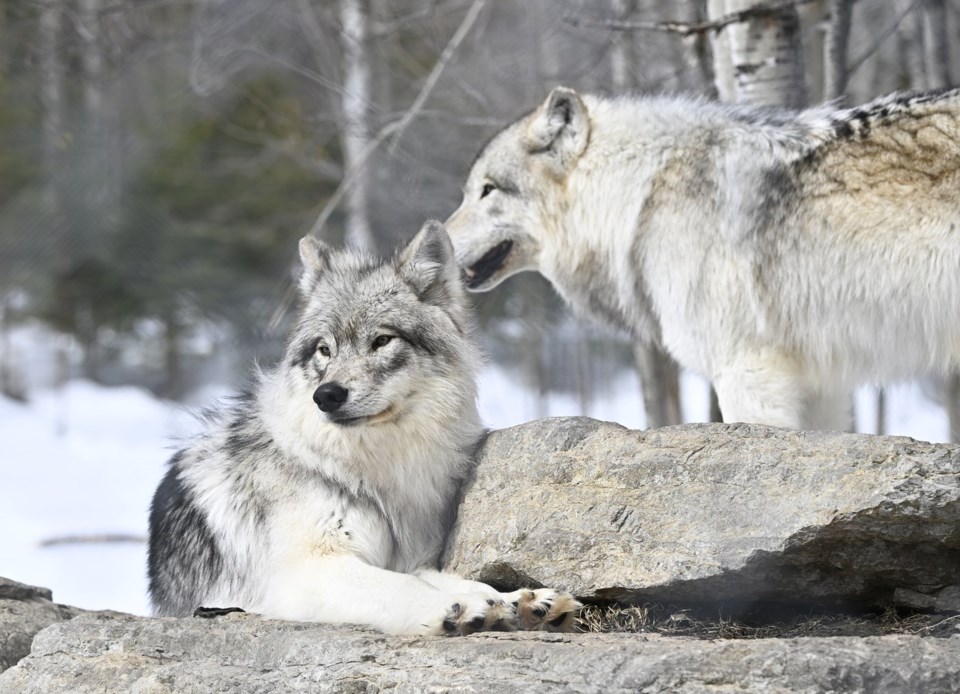Entertainment
Viral Wolf Pack Videos Misrepresent Canine Behavior and Hierarchy

A series of viral videos claiming to depict a strategic formation of wolf packs have sparked discussions across social media platforms. These videos suggest that the oldest and sickest wolves lead the pack as they traverse snowy landscapes in single file. This portrayal has caught the attention of wildlife experts, who argue that it misrepresents the true nature of wolf behavior.
February 2024 has seen a surge in these videos, which often show wolves walking in a line, creating an impression of organized leadership. The narratives surrounding these videos assert that this formation is a deliberate strategy used by wolves to enhance their survival chances in harsh environments. However, experts in wildlife behavior emphasize that this interpretation lacks scientific backing.
Understanding Wolf Behavior
The misconception surrounding wolf pack hierarchy stems from a misunderstanding of their social structure. According to Dr. L. David Mech, a renowned wolf biologist and senior scientist with the United States Geological Survey, the dynamics of wolf packs are far more complex. In his research, Dr. Mech indicates that wolf packs typically consist of a breeding pair and their offspring, rather than a hierarchy dominated by older or sick individual wolves.
“Wolves do not have a strict social hierarchy as often portrayed in popular media,” Dr. Mech states. “Their social interactions are fluid, and roles can change based on the circumstances.” This highlights the adaptability of wolves and their ability to function as a cohesive unit rather than following a rigid structure.
Wildlife experts suggest that the viral nature of these videos may stem from a romanticized view of wolves as “noble” creatures. While wolves are indeed fascinating animals, the idea of a genius hierarchy misrepresents their natural behavior and can lead to misunderstandings about their ecology.
Impact of Viral Misinformation
The spread of misleading information about wolf behavior can have broader implications for conservation efforts. Misconceptions may influence public perception, leading to fear or misunderstanding that affects wildlife management policies. According to the International Wolf Center, educating the public about wolf behavior is crucial for fostering coexistence between humans and wildlife.
Conservationists emphasize that accurate representations of wolf behavior can help mitigate conflicts as human populations encroach on wolf habitats. By promoting a better understanding of wolves, organizations aim to highlight their ecological role and the importance of preserving their natural environments.
As these viral videos continue to circulate, engaging with credible sources and scientific research remains essential for fostering informed discussions about wildlife. The fascination with wolves should be rooted in factual understanding, celebrating their complexity rather than simplifying their behavior into misleading narratives.
In conclusion, while the allure of viral videos can capture public attention, it is vital to approach claims about wolf behavior with skepticism and seek out expert insights. The true nature of wolves is far more intricate, reflecting their adaptability and social dynamics in ways that defy simplistic interpretations.
-

 World4 months ago
World4 months agoScientists Unearth Ancient Antarctic Ice to Unlock Climate Secrets
-

 Entertainment4 months ago
Entertainment4 months agoTrump and McCormick to Announce $70 Billion Energy Investments
-

 Lifestyle4 months ago
Lifestyle4 months agoTransLink Launches Food Truck Program to Boost Revenue in Vancouver
-

 Science4 months ago
Science4 months agoFour Astronauts Return to Earth After International Space Station Mission
-

 Technology2 months ago
Technology2 months agoApple Notes Enhances Functionality with Markdown Support in macOS 26
-

 Top Stories4 weeks ago
Top Stories4 weeks agoUrgent Update: Fatal Crash on Highway 99 Claims Life of Pitt Meadows Man
-

 Sports4 months ago
Sports4 months agoSearch Underway for Missing Hunter Amid Hokkaido Bear Emergency
-

 Politics3 months ago
Politics3 months agoUkrainian Tennis Star Elina Svitolina Faces Death Threats Online
-

 Politics4 months ago
Politics4 months agoCarney Engages First Nations Leaders at Development Law Summit
-

 Technology4 months ago
Technology4 months agoFrosthaven Launches Early Access on July 31, 2025
-

 Top Stories2 weeks ago
Top Stories2 weeks agoFamily Remembers Beverley Rowbotham 25 Years After Murder
-

 Top Stories1 week ago
Top Stories1 week agoBlake Snell’s Frustration Ignites Toronto Blue Jays Fan Fury















